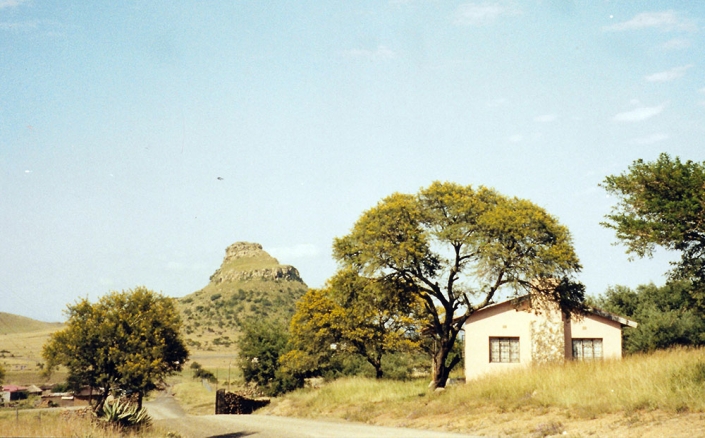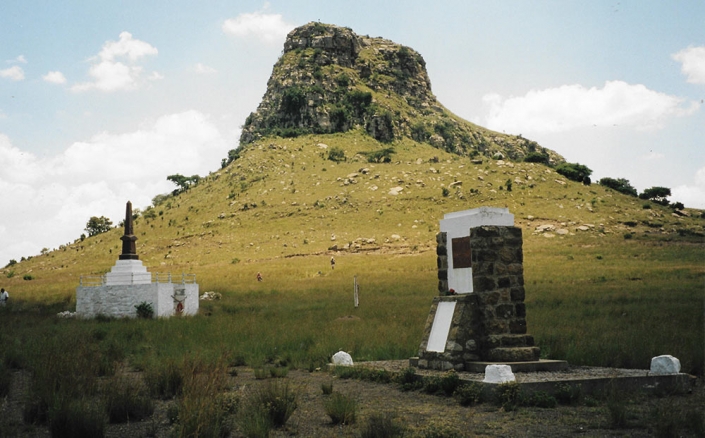The Eerie Calm of Isandlwana
THE ghosts still linger in the wide open valley, a melancholy presence which will never be laid to rest, imprinted on this great solitude of nature.
There is an eerie dead calm which hangs over the sweeping Isandlwana plains.
It is impossible to go there and not feel its profound effect.
Stand on the side of the strange Sphinx-shaped mountain where little simple whitewashed stone cairns pebble dash the lower slopes to indicate the last resting places of the fallen, and feel the goosebumps standing to attention.
Something washes over you and, gripped by a rush of sorrow, tears well up and flow.
It is such a powerfully charged experience, you feel as if the dusty earth beneath your feet is conducting things – drenched with such sadness that even after all these years, the very soul of the place still aches and aches.
It was here on January 23, 1879 that the British army suffered one of its most humiliating defeats. All of the earlier sabre rattling aimed at goading the Zulu nation into battle certainly worked.
But, no one imagined such an unstoppable force would rise up and take the bait.
And, when 25,000 warriors finally swarmed in fury over the horizon slapping their assegai against their cowhide war shields and chanting as one, that pitiful bunch of red-coated soldiers sent there to “wipe them out” stood no chance.
Lord Chelmsford, the Lieutenant-General commanding the British forces in South Africa had met with little resistance and his men emerged victorious from an earlier skirmish. Buoyant, he set up camp on the gently sloping lower shoulders of Isandlwana to prepare for the final rout.
Zulu Warriors
When intelligence came in from an advance party informing him that a “major force” of Zulu warriors (around a thousand strong) had been detected off to the east, he rode out cocky and stoked with trademark Eton superior confidence – and made the major, calamitous error of splitting his column and taking the best half of the fighting force off into the bush to deal with them.
In doing so, he left a raggle taggle band of cooks, orderlies, medics and young rookie soldiers behind with a handful of senior officers to hold the fort.
Today, great story-tellers and historians take visitors out to sit in awe and hear the chilling tales of valour which emerged from the catastrophe which was to follow.
They all agree that the topography alone can work its hypnosis.
I sat under a Paper Bark Acacia, choked as everyone else was, as one re-lived the hellish two hours of bloody bedlam in stories he’d retrieved from the wizened, ancient sons and grandsons of the Zulus who took part. There were a dozen in our group. Each reached for their hankies.
Scan the horizon and you can imagine the heart-stopping impact which must have been felt as the low, musical murmuring sound of the approaching warriors could be heard like a gigantic swarm of angry bees drawing closer and closer.
The unsuspecting British contingent left behind that fateful day was ill-prepared for such a mighty and fateful happening as they began to prepare breakfast.
A scouting party then stumbled accidentally on the main Zulu army
consisting of 25,000 warriors, several thousand women and fifteen thousand young braves squatting in silence over the ridge.
Impending fury
Out of breath and “in a mortal funk”, one rode as fast as his horse would carry him back to warn of the impending fury which was about to be unleashed.
“I stood aghast,” he said, “as below and beyond me, as far as the eye could see, regiment after disciplined regiment of Zulu warriors were sitting in silence on the plains.”
Disturbed and having lost any element of surprise which had existed, the Zulus immediately rose up, their great, rolling, rhythmic war chants accompanied by mass stamping of their feet with such a force that it shook the earth.
Their women followed, chanting blood-curdling, keening cries of encouragement.
Well organised and superbly drilled for battle, six thousand warriors split off to the west and a similar number curved off in the opposite direction to form a classic buffalo-horn pincer movement.
Once in place and ready to engage the enemy, the buffalo head and body surged forward to engulf the hillside like a big, black tsunami wave. The little knots of red where riflemen had been positioned to try and stem the flow, were soon bobbing about like corks on a dreadul, furious ocean like flotsam tossed around.
Those caught in the mailstrom fought valiantly, of that there is no doubt, and were later hailed as heroic individuals – even in Zulu folklore.
The Zulus too were gallant as they hacked and stabbed their way through the thin red line.
Important ritual
British newspapers of the time portrayed them as barbaric savages, reporting how they had disembowelled each of their victims. In truth, the warriors did the same to their own dead. It was an important ritual they performed, believing they would release the spirit from the corpse.
History records Isandlwana as a British defeat which could have been prevented. The camp had not been fortified nor protected by an excavated trench. Chelmsford was vilified for splitting his column and leaving those who remained in a vulnerable and impossible-to-defend position.
In fact, very few if any commentators gave the King Cetshwayo and his Zulu chiefs any of the credit for their tactical supremacy and incredible bravery in the face of volley after volley of fire from the Martini-Henry carbines which blasted their ranks for close on two solid hours.
Although a major disaster for the British Government of the day, honour was partly restored through the bravery of the few remaining soldiers who fortified the nearby Rorke’s Drift supply station a few miles away and defended it against the odds with such gallantry that fourteen VCs were subsequently awarded – more than were won in both World Wars put together.
The epic story, of course, was told to the world in the epic blockbuster ‘Zulu’ starring Michael Caine.
* Leading specialist tour operators African Pride take groups out to visit the Zulu Battlefields and hear the stirring stories of valour and British upper crust arrogance that resulted in such unnecessary slaughter.






